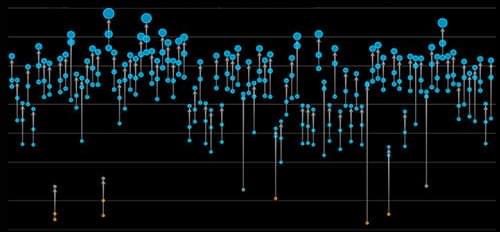A new model describes the population of black hole binaries without assumptions on the shape of their distribution—a capability that could boost the discovery potential of gravitational-wave observations.
Since the first groundbreaking observation of gravitational waves from a black hole merger [1], a worldwide network of observatories–LIGO, Virgo, and KAGRA—has discovered nearly a hundred mergers involving black holes and neutron stars (Fig. 1). The nature of this population of compact objects has implications for nearly every aspect of astrophysics and cosmology. However, understanding how gravitational-wave sources fit into our astrophysical theories has proved challenging. Many of the discoveries have confirmed our expectations, but some—such as those of asymmetric black hole binaries or of unexpectedly massive black holes—defy them.









Comments are closed.